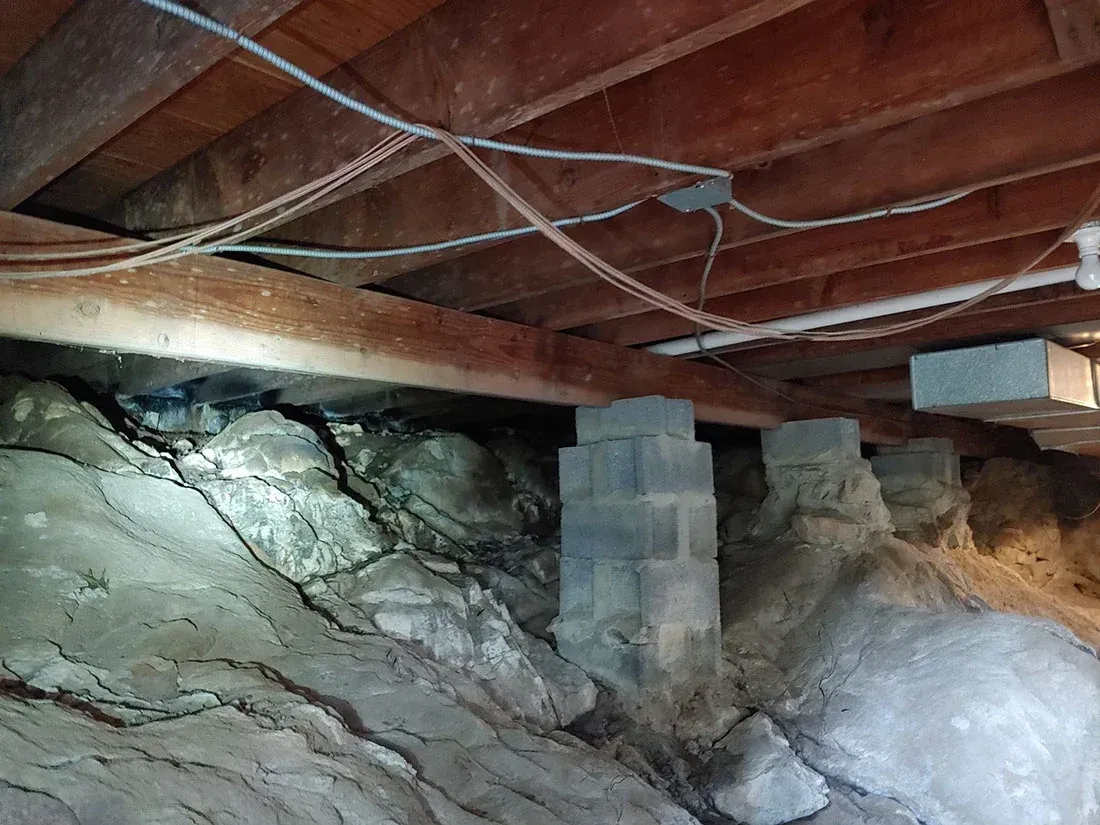How to Prevent Mold in Crawlspaces

Mold growth in crawlspaces is a common and persistent issue that can lead to structural damage, reduced air quality, and increased health risks. Homeowners often face mold problems due to improper crawlspace construction, insulation, or ventilation. However, mold prevention is possible and essential for a healthy and stable home.
What Causes Mold in Crawlspaces?
Mold in crawlspaces typically results from poor moisture control, improper ventilation, or ineffective insulation. Crawlspaces are naturally prone to collecting moisture from the ground or air, creating an ideal breeding ground for mold. When these areas are not adequately sealed or insulated, outside air mixes with the cooler, humid crawlspace air, leading to condensation and mold growth.
Poorly vented crawlspaces can also trap moisture, further aggravating mold issues. The most significant factor contributing to mold is the imbalance between the indoor and outdoor environments. Mold thrives when the crawlspace is not correctly connected to the house or sealed from outside elements.
Should You Vent or Seal Your Crawlspace to Prevent Mold?
A critical decision in mold prevention is venting or sealing your crawlspace. Sealing or conditioning your crawlspace is typically the best method for preventing mold. In a sealed crawlspace, insulation is applied to the interior walls, and the ground is covered with a continuous vapor barrier to block moisture. Sealed crawlspaces are isolated from the outside air and are considered part of the home’s conditioned space, preventing the introduction of excess moisture that leads to mold.
Vented crawlspaces, on the other hand, allow outside air to circulate. This often leads to condensation on cooler surfaces, which promotes mold. Vented crawlspaces can work in specific environments but are generally less effective at moisture control than sealed ones.
What Steps Should You Take to Prevent Crawlspace Mold?
Preventing crawlspace mold requires moisture control, proper insulation, and regular maintenance. Here are the critical steps to follow:
· Install a Vapor Barrier: A vapor barrier is crucial for blocking ground moisture. Make sure it is continuous and impermeable, covering the entire ground surface. This prevents moisture from rising into the crawlspace and causing condensation on cooler surfaces.
· Insulate the Walls: Use rigid insulation on the crawlspace walls, not on the floor joists. This method keeps the crawlspace warmer, reducing condensation and moisture buildup. Insulating the walls also helps regulate the temperature and humidity inside the crawlspace.
· Ensure Proper Ventilation or Conditioning: If you opt for a sealed crawlspace, provide a means of air exchange between the crawlspace and the rest of the home. This could be through a dedicated HVAC system or a dehumidifier. For vented crawlspaces, ensure the vents allow for proper air circulation to avoid moisture buildup.
· Monitor Humidity Levels: Controlling the crawlspace’s humidity is key to mold prevention. A dehumidifier can maintain optimal humidity levels, especially in humid climates.
· Address Water Intrusion: If you notice water pooling in your crawlspace, address the issue immediately. Water leaks or poor drainage can lead to mold growth. Ensure your home’s gutters and downspouts direct water away from the foundation.
Can You Fix Crawlspace Mold Once It Appears?
If mold has already developed in your crawlspace, remediation will be necessary. Mold removal in crawlspaces typically involves cleaning the affected areas with antimicrobial solutions, removing damaged materials, and addressing the root cause.
However, mold removal without addressing the underlying moisture problem will only result in mold returning. Installing a vapor barrier, improving ventilation, and sealing the crawlspace can prevent mold growth.
Preventing Crawlspace Mold
Preventing mold in crawlspaces requires proactive measures and regular maintenance. Sealing your crawlspace, installing proper insulation, and controlling humidity reduce the risk of mold growth. These steps ensure that your crawlspace remains a dry and healthy part of your home, protecting the structure and indoor air quality. A sealed, conditioned crawlspace prevents mold and contributes to a more energy-efficient and comfortable home.



